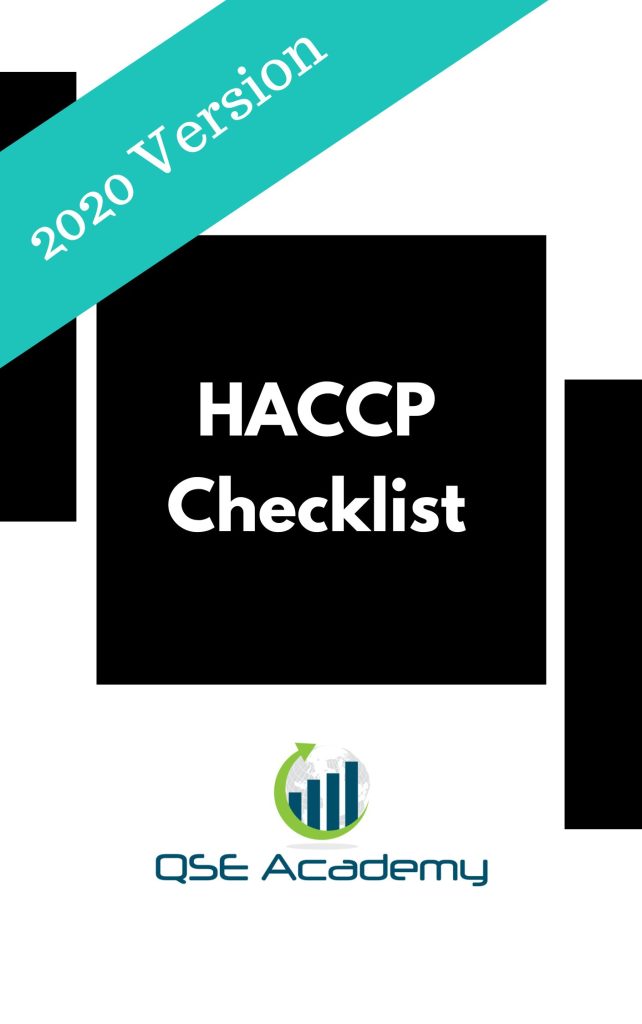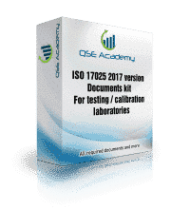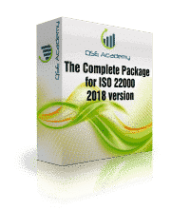HACCP Checklist PDF [Download]
2024-10-03 11:35HACCP Checklist PDF [Download]


![HACCP Checklist PDF [Download]](https://www.qse-academy.com/wp-content/uploads/2019/10/1571645528-17020501-106x106-90-Day-Guarantee.png)

HACCP Checklist PDF
4.8/5
Precise Coverage: Meets all standard requirements.
Instant Download: Get it immediately in Word or Excel.
Easy to Use: Simplifies the audit process.
Limited-time offer: 50 % OFF
Price : 29 $
instead of 58$
Optimize your HACCP (Hazard Analysis and Critical Control Points) audit with our detailed checklist, designed to align with the core principles of food safety management. Available for instant download in user-friendly Word and Excel formats, this checklist is an invaluable tool for ensuring compliance and streamlining the evaluation process of critical control points. It’s essential for food safety professionals focused on preventing hazards and ensuring food safety throughout the production and supply chain.
- Template accessible in both Excel, Word and PDF.
- Can be personalized to fit specific organizational needs.
- Includes a license for use by up to 10 people.
- Payments secured through Stripe.
- Mastercard, Visa, Paypal, Apple pay & Google pay payments accepted.
- Access your template whenever you want.
![HACCP Checklist PDF [Download]](https://www.qse-academy.com/wp-content/uploads/2019/10/1570800031-46705315-179x46-Webp.net-resizeimage.png)
HACCP Checklist
If you’re planning to prepare a Food Safety Management System (FSMS) in accordance with HACCP principles, where should you begin?
We recommend starting with a Gap Analysis to identify the differences between your current management system and the requirements of a HACCP-compliant FSMS. A Gap Analysis helps assess your organization’s scope, readiness, and resources for developing the Food Safety Management System. This analysis provides essential data to create a detailed project plan for HACCP implementation.
This gap analysis checklist is a valuable tool for evaluating your Food Safety Management System against HACCP principles.
The HACCP checklist is an excellent resource for auditors, aiding in the creation of audit questionnaires to verify the effectiveness of the implemented Food Safety Management System. There are numerous internal audit requirements based on HACCP guidelines.
Organizations applying for or renewing their HACCP certification should complete this checklist. Additionally, if significant changes have been made to the management system’s structure, the HACCP checklist should be updated.
The sections in the HACCP checklist follow the order of the seven HACCP principles. In some instances, they are also referred to as supplementary required documents.
What is a HACCP Audit Checklist?
A HACCP (Hazard Analysis and Critical Control Points) audit checklist is a comprehensive tool designed to assist auditors in evaluating the effectiveness of a food safety management system. The checklist serves as a guideline to ensure all elements of the HACCP system are properly implemented and maintained, covering critical areas such as hazard analysis, critical control points, monitoring procedures, corrective actions, verification procedures, and record-keeping. By systematically addressing each requirement, the checklist helps identify areas where the organization excels or needs improvement, facilitating targeted actions to enhance overall food safety performance. This structured approach not only supports compliance but also aids in sustaining long-term food safety goals, making it essential for organizations committed to ensuring the safety and quality of their food products.
What Does a HACCP Audit Checklist Include?
A HACCP Audit Checklist thoroughly evaluates an organization’s food safety management system against the principles and requirements of HACCP, ensuring comprehensive compliance and effective management. The checklist covers:
Preliminary Steps:
- Assemble the HACCP team.
- Describe the product.
- Identify the intended use.
- Construct flow diagrams.
- On-site confirmation of flow diagrams.
Principle 1: Conduct a Hazard Analysis
- Identify potential hazards.
- Assess hazards.
- Determine control measures.
Principle 2: Determine Critical Control Points (CCPs)
- Identify steps where control is essential to prevent, eliminate, or reduce hazards to acceptable levels.
Principle 3: Establish Critical Limits
- Define maximum or minimum values for temperature, time, pH, etc., that must be met to ensure each CCP is under control.
Principle 4: Establish Monitoring Procedures
- Develop procedures to monitor CCPs and ensure they remain within critical limits.
Principle 5: Establish Corrective Actions
- Outline actions to be taken when monitoring indicates a deviation from an established critical limit.
Principle 6: Establish Verification Procedures
- Implement activities to confirm the HACCP system is working effectively.
Principle 7: Establish Record-Keeping and Documentation Procedures
- Maintain documentation and records to demonstrate the effective application of these steps.
How to Prepare for a HACCP Audit?
Preparing for a HACCP audit involves several key steps to ensure your food safety management system complies with HACCP principles:
Review Documentation:
- Ensure all your HACCP checklist plans, policies, procedures, and records are up to date and align with HACCP requirements.
Conduct Internal Audits:
- Perform regular internal audits to identify gaps and non-compliance issues. Address these issues promptly.
Employee Training:
- Train your employees on HACCP principles and their specific roles in maintaining HACCP compliance.
Management Review:
- Have top management review the HACCP system’s performance, ensuring it meets strategic objectives and continues to improve.
Corrective Actions:
- Implement necessary corrective actions to address any discrepancies found during internal audits or previous external audits.
By meticulously preparing and addressing these aspects, you can help ensure a smooth HACCP audit process.
![HACCP Checklist PDF [Download]](https://www.qse-academy.com/wp-content/uploads/2019/10/1570800026-46705630-168x170x170x170x1x0-Webp.net-resizeimage.png)

![HACCP Checklist PDF [Download]](https://www.qse-academy.com/wp-content/uploads/2019/10/iso9001CP.png)



